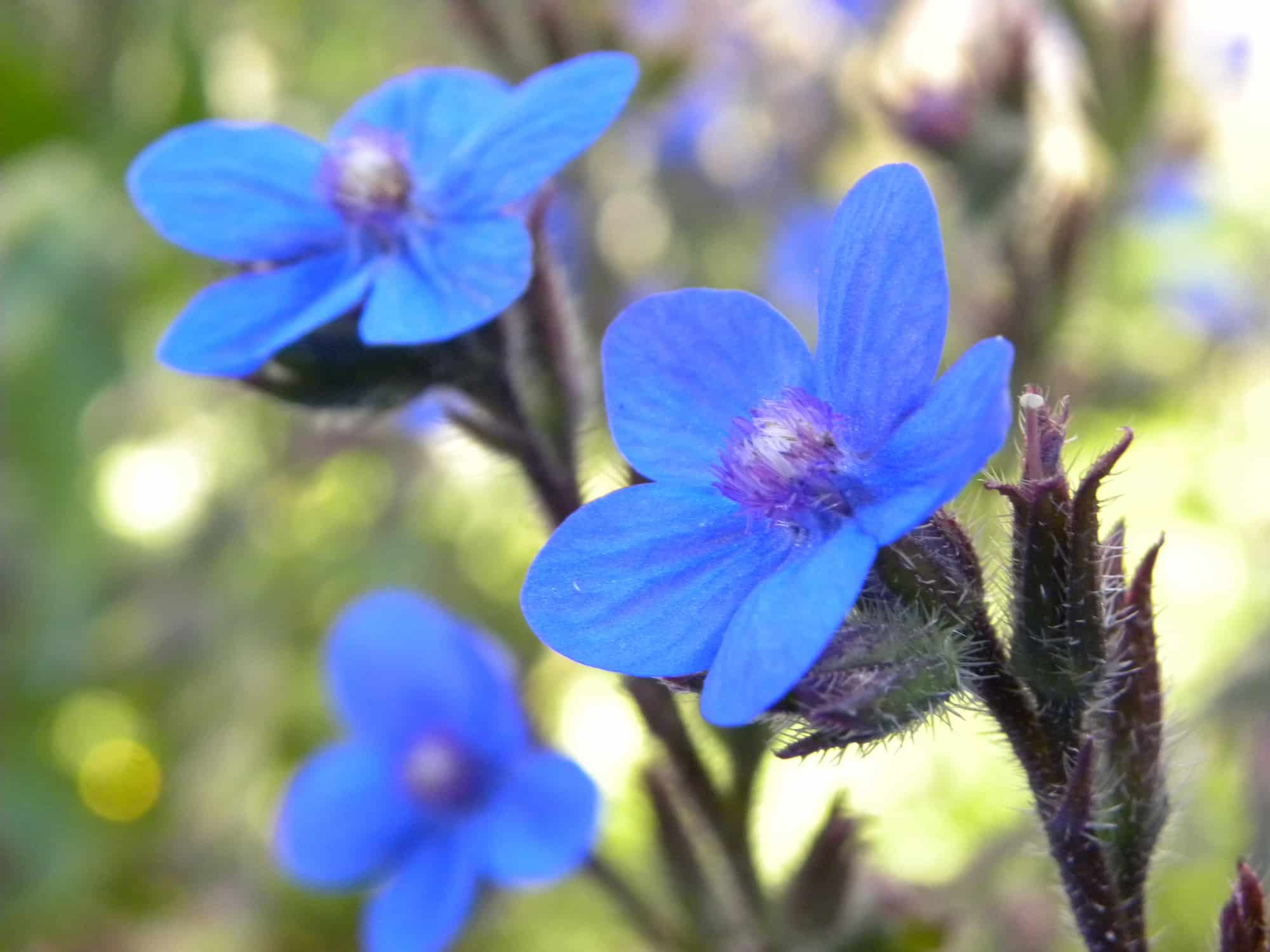
Growing anchusa in pots
This perennial wildflower with bright blue flowers adapts well to pot cultivation.
Contents
The Anchusa azurea, commonly known as bluebell, showcases its relationship with borage and forget-me-nots through the vibrant azure blue of its flowers. This is indeed one of the main reasons to grow this herbaceous perennial, as blue flowers are relatively rare in the garden. With the Italian bluebell, we also appreciate its ease of cultivation, hardiness, and low water requirements, making it an ideal candidate for rockeries, cottage gardens, or more wild and natural settings, as well as for pot cultivation. Moreover, it grows in bristly clumps that bloom in spring and mid-summer. Discover all our tips and tricks for growing anchusa in pots.
What pot for the anchusa?
Due to its impressive root system, Anchusa azurea thrives in deep soils. This is why you need to choose a pot that is at least 30 cm deep, or even deeper if you can find one. Prefer terracotta over any other material as it has thermoregulating properties and natural porosity. However, the anchusa has a small flaw: it disappears in winter if the substrate is too waterlogged. Thus, by choosing a terracotta pot, you minimise the risks.
To provide the bugloss with the best growing conditions, place a good layer of gravel or clay balls at the bottom of the pot to facilitate drainage.
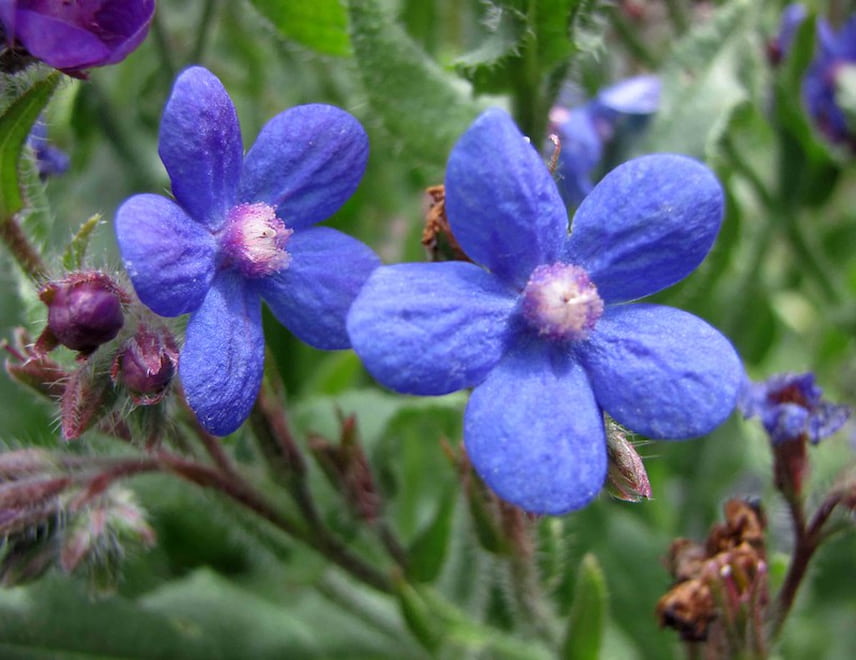
What substrate to use for a pot-bound bugloss?
Low-maintenance, the Italian bugloss thrives in garden soils that should, however, be rich and light. On the other hand, the substrate must be well-draining to prevent the radicular system from rotting in winter.
Once your clay balls or gravel are placed at the bottom of the pot, add a mixture of 1/3 garden soil, 1/3 potting compost, and 1/3 coarse sand. This will create a well-draining substrate that is rich in organic matter.
Discover other Anchusa
View all →Available in 1 sizes
Available in 1 sizes
When and how to pot Anchusa?
The fairly strong roots of the anchusa do not tolerate transplantation well, which is why, for pot planting, it is better to proceed by sowing. Alternatively, you can choose a seedling in pots from the current year. In any case, remember to act with caution, as the roots are quite fragile.
Planting young buglosses takes place in spring, from February to May, always avoiding the heat. However, you can also plant in autumn, from September to November, avoiding frost. In this case, it is recommended to cover the pot with a good layer of mulch or dried leaves, which should be removed in spring.
If you wish to sow, do so in June as the seeds germinate at 20 °C. Then, transplant your young plants in autumn and remember to cover your pot with mulch. You can also sow indoors from February and transplant into pots as soon as the seedlings have 4 to 5 leaves. However, be aware that it takes two years for them to flower after sowing.
What exposure should you choose for Anchusa?
Bugloss loves the sun, so don’t deprive it of light. Choose a well-sunny spot for it, as in the garden, it tolerates drought very well thanks to its villous foliage. However, in the southernmost areas, if you place it on a balcony or terrace, provide it with partial shade to enhance the intensity of its flower colour.
As the stems of the bugloss tend to droop, position your pot against a wall. This way, a stake may not be necessary.
How to care for pot-grown anchusa?
Watering
Although the bugloss can tolerate temporary drought, it will need watering when in a pot. However, never overwater as the roots can rot quickly. Ideally, allow the surface substrate to dry out between waterings. Never leave water in the pot’s saucer.
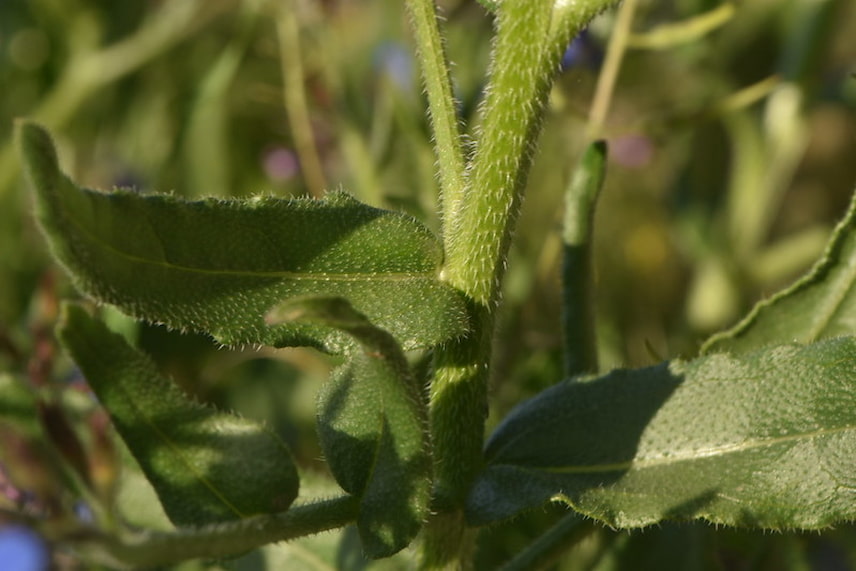 The anchusa has villous foliage that helps it withstand drought relatively well.
The anchusa has villous foliage that helps it withstand drought relatively well.
Also, make sure to water the bugloss at the base, as it is prone to powdery mildew in hot, humid weather.
Fertiliser Application
An application of organic fertiliser can be made at the start of the growing season in spring. You can use a fertiliser for flowering plants, crushed horn, or fertilising humus.
Winter Mulching
The bugloss is quite hardy, but mulching in winter will help protect the stump from moisture. Be sure to remove it in spring.
Removing Faded Flowers
Unless you want to collect seeds, cut back the faded stems to encourage the appearance of new inflorescences in September. In the garden, bugloss self-seeds quite easily, but it is more difficult in pots.
Repotting
As the anchusa tends to exhaust itself, and sometimes completely and suddenly disappear, plan to repot every two to three years in spring. Take the opportunity to divide the clumps and take root cuttings to rejuvenate the plant… You can also propagate a few sections of roots.
Which variety to choose?
- Anchusa azurea ‘Loddon Royalist’ is better suited for pot cultivation as it hardly exceeds 80 cm in height. Moreover, its flower spikes are sturdy enough and have good support to avoid drooping. Staking is therefore unnecessary.
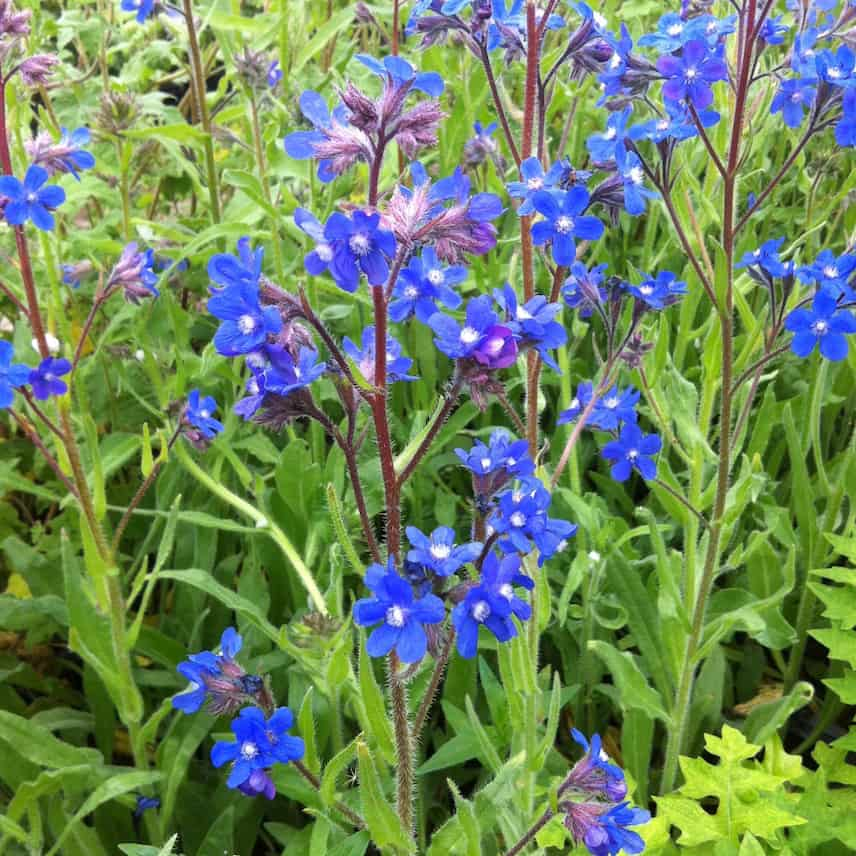 The Anchusa azurea Loddon Royalist reaches 80 cm in height
The Anchusa azurea Loddon Royalist reaches 80 cm in height
- Anchusa azurea ‘Dropmore’ has flowers of a stunning gentian blue. It is very easy to grow but can reach 1.5 m in height. Staking will be necessary, but it can look magnificent on a balcony or terrace.
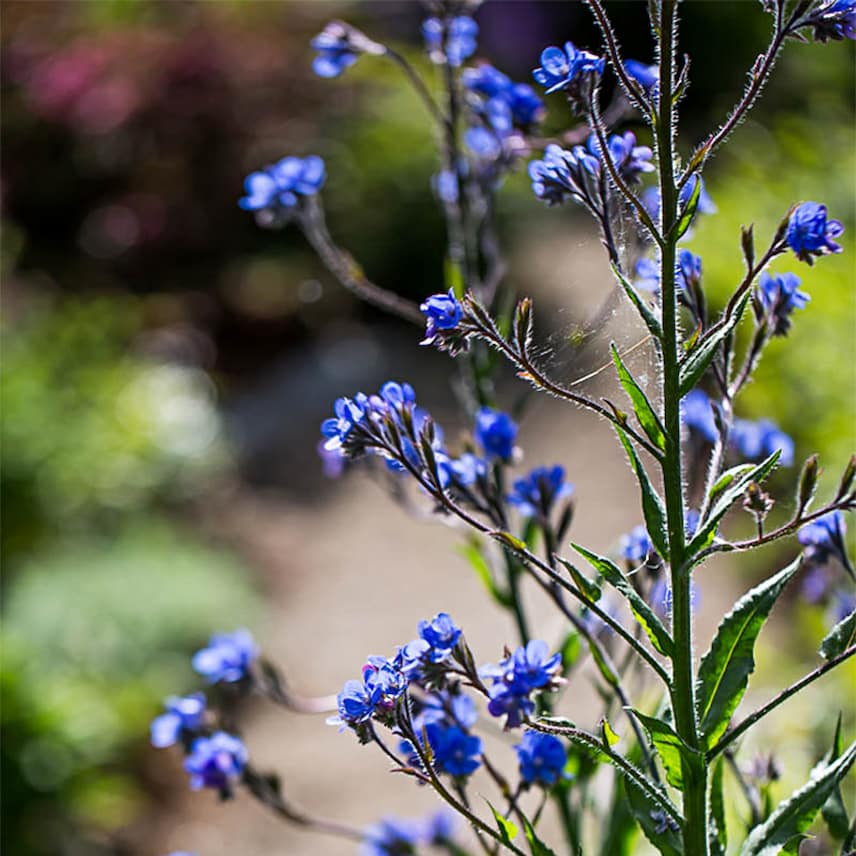 The Anchusa azurea Dropmore is less suited for pot cultivation due to its height
The Anchusa azurea Dropmore is less suited for pot cultivation due to its height
- Anchusa azurea ‘Little John’: this is a dwarf variety with a maximum height of 40 to 50 cm
- Subscribe!
- Contents
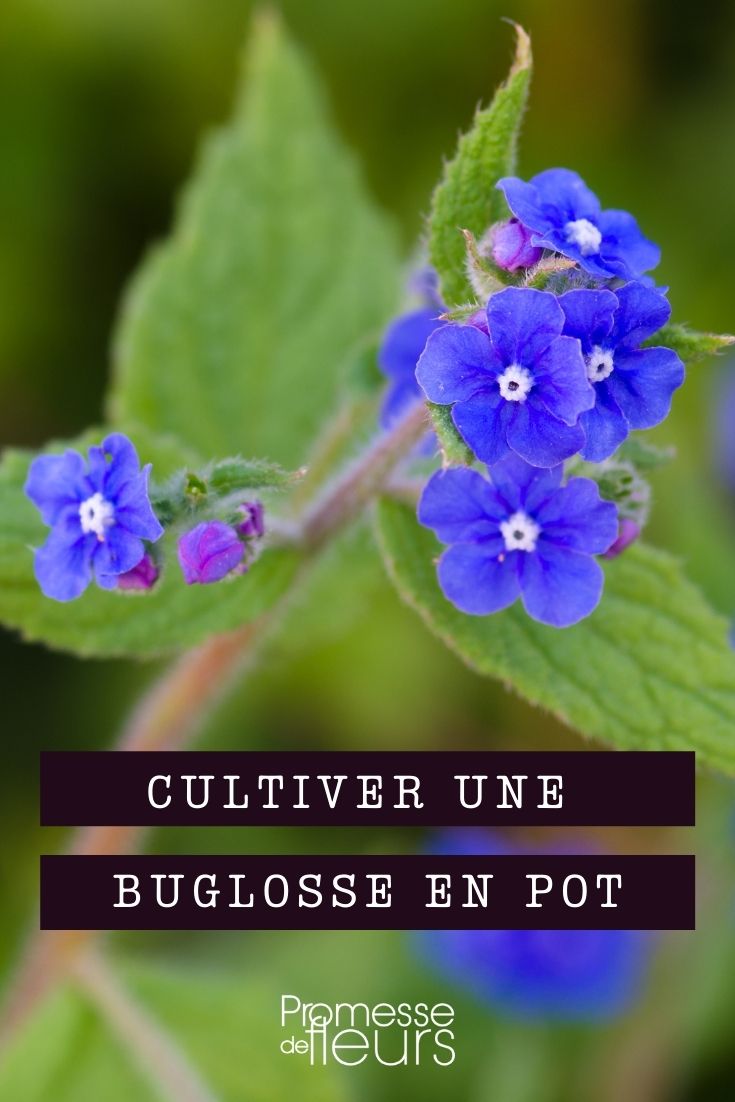































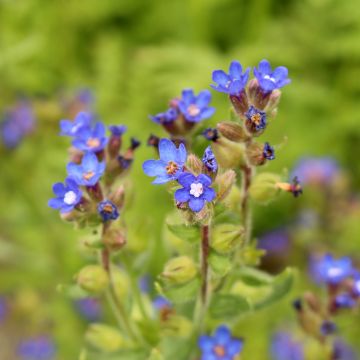
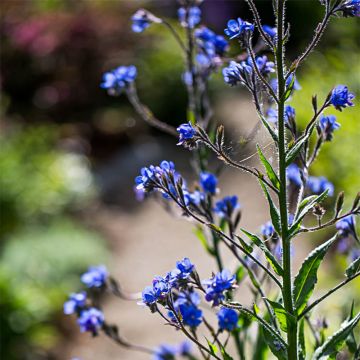
Comments